A system consists of three , and connected by a string passing over a pulley P . The mass hangs freely and and are on a rough horizontal table(the coefficient of friction=)The pulley is frictionless and of negligible mass. The downward acceleration of mass is (Assume .
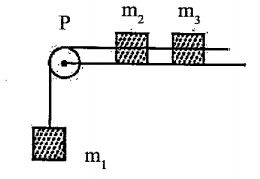 .Solution in Tamil
.Solution in Tamil
Step by step video & image solution for A system consists of three m_1, m_2 and m_3 connected by a string passing over a pulley P . The mass m_1 hangs freely and m_2 and m_3 are on a rough horizontal table(the coefficient of friction=mu)The pulley is frictionless and of negligible mass. The downward acceleration of mass m_1 is (Assume m_1 - m_2 = m_3=m). . by Physics experts to help you in doubts & scoring excellent marks in Class 11 exams.
Topper's Solved these Questions
Similar Questions
A and B are two vectors and θ is the angle between them, if ∣∣→A×→B∣∣=√3(→A.→B) the value of θ is :
11:57View SolutionA particle moving along x-axis has accelaration f, at time t , given by f=f0(1−tT) where f0 and T are constants . The particle at t=0 has zero velocity . In the time interval between t=0 and the instant when f=0, the particle's velocity (νx) is:
03:59View SolutionThree blocks of masses m1,m2andm3 are connected as shown in the figure. All the surfaces are frictionless and the string and the pulleys are light. Find the acceleration of m1
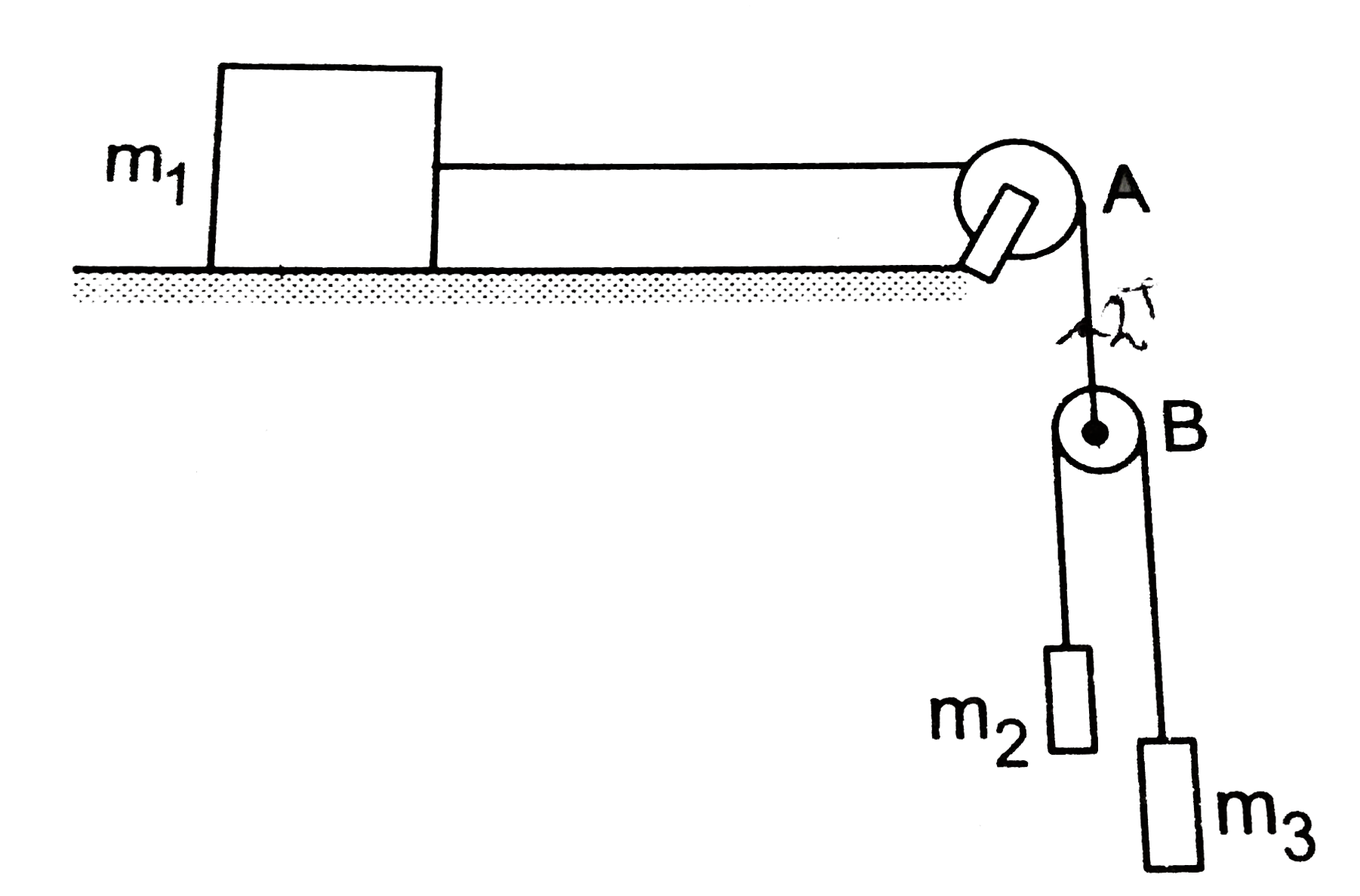 02:14View Solution
02:14View SolutionTwo bodies with masses m1 and m2(m1>m2) are joined by a string passing over fixed pulley. Assume masses of the pulley and thread negligible. Then the acceleration of the centre of mass of the system (m1+m2) is
03:25View SolutionIf two masses m_1 and m_2 (m_1 gt m_2) tied to string moving over a frictionless pulley, then acceleration of masses
05:03View SolutionThree masses m1=m,m2=2mandm3=3m are hund on a string passing over a frictionless pulley as shown in Figure . The mass of the string in negligible . The system is released from rest.
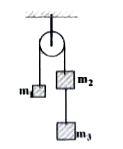
If a1a2anda3 are the accelerations of masses m1,m2andm3 respectively, then03:42View SolutionThree masses m1=m,m2=2mandm3=3m are hund on a string passing over a frictionless pulley as shown in Figure . The mass of the string in negligible . The system is released from rest.
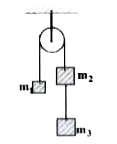
The tension in the string between masses m1andm2 is05:16View Solutionm1,m2 व m3 द्रव्यमान के तीन पिण्ड क्रमागत द्रव्यमान रहित डोरी से जुड़े हैं और एक घर्षण रहित मेज पर रखे हैं | यदि m3 द्रव्यमान को बल F से खींचा जाए, तो m2 व m3 द्रव्यमानों के बीच डोरी में तनाव होगा :
05:09View Solutionतीन द्रव्यमान M1,M2 व M3 एक घर्षणरहित मेज पर स्थित है। द्रव्यमान चित्रानुसार द्रव्यमानहीन डोरी से जुड़े हैं। द्रव्यमान M3 को चित्रानुसार नियत बल F द्वारा खींचा जाता है तो द्रव्यमान M2 व M3 के मध्य डोरी में तनाव होगा-
 06:33View Solution
06:33View Solutionयहाँ दर्शाये गये निकाय में तीन पिंड m1,m2 और m3 एक रस्सी से जुड़े है जो एक घिरनी के ऊपर से होकर गुजरती है। m1 मुक्त रूप से लटका है औरm2 तथा m3 एक रुक्ष क्षैतिज मेज पर है, जिसका घर्षण गुणांक =μ है। घिरनी घर्षणरहित है और इसका द्रव्यमान नगण्य है। यदि m1=m2=m3=m है, तो m1 का अधोमुखी (नीचे की ओर) त्वरण होगा:
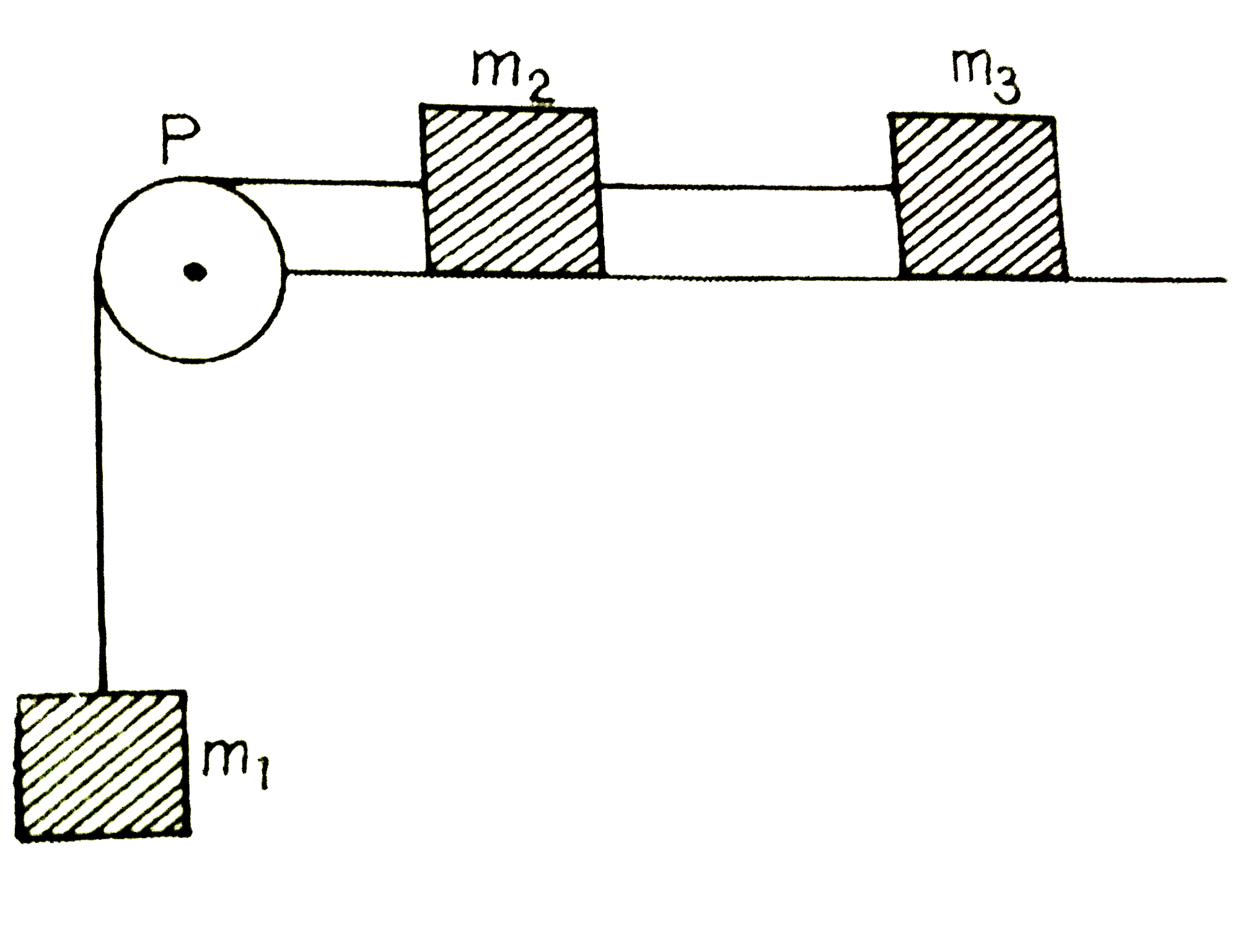 02:41View Solution
02:41View SolutionThree blocks of masses m1,m2andm3 are connected as shown in the figure. All the surfaces are frictionless and the string and the pulleys are light. Find the acceleration of m1
 View Solution
View SolutionGravitational force between masses m1 and m2 is F. If a third mass m3 is placed near m1 and m2, then the force between m1 and m2 would be
04:06View SolutionGravitational force between masses m_1 and m_2 is F. If a third mass m_3 is placed near m_2 and m_3 then the force between m_1 and m_2 would be
05:09View SolutionTwo bodies with masses m_1 and m_2(m_1gtm_2) are joined by a string passing over fixed pulley. Assume masses of the pulley and thread negligible. Then the acceleration of the centre of mass of the system (m_1+m_2) is
04:12View SolutionThree blocks of masses m1,m2and m3kg are placed in contact with each other on a frictionless table. A force is applied on the heaviest mass m1, the acceleration of m3 will be:
05:09View SolutionIn the given figure m_1 = m_2 = m_3 = m .Here m_2 And m_3 When the plane is on a rough surface m_1 Hung by a rope. If the rope and pulley are ideal m_1 Count the acceleration of. (Friction = mu )
02:03View Solution

